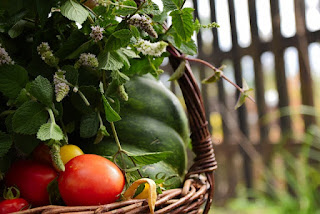
What is Local Living and Why It Matters for a Self-Sustainable City
Have you ever heard the phrase "think global, act local"? It's more than just a catchy slogan—it's a way of life that can transform how we live and interact with our environment. So, what exactly is "local living," and why is it such a big deal, especially for a self-sustainable city?
Local living focuses on supporting and connecting with the community and resources that are nearby. This means buying food from local farmers, shopping at neighborhood stores, and participating in community events. By doing so, you reduce the carbon footprint associated with transporting goods over long distances and support the local economy.
Why Local Living Matters
1. Environmental Impact: When we choose local products, we cut down on the need for long-distance transportation. This reduces greenhouse gas emissions and lowers our overall environmental impact. For instance, local farms often use fewer chemicals and have shorter supply chains, which is better for the environment.
2. Economic Benefits: Shopping locally keeps money within the community, helping small businesses thrive. This boosts the local economy and creates job opportunities. Imagine a farmer’s market where you not only get fresh produce but also support local entrepreneurs.
3. Community Connection: Engaging with local businesses and events fosters a sense of community. It’s about knowing your neighbors and creating a network of support. For example, local festivals or markets are great ways to meet people and strengthen community bonds.
Real-Life Examples
In Portland, Oregon, a city renowned for its commitment to local living, initiatives like the Portland Farmers Market and neighborhood-based small businesses illustrate how local living thrives. These efforts not only reduce the city’s carbon footprint but also build a strong, interconnected community.
Similarly, in the small town of Totnes, England, a "Transition Town" movement has successfully promoted local living by encouraging residents to support local producers and reduce reliance on imported goods. This approach has fostered greater resilience and sustainability within the community.
Local Living in Our Self-Sustainable City
In our self-sustainable city project, local living is a cornerstone of our vision. By integrating local food production, supporting nearby businesses, and fostering community engagement, we’re creating a vibrant and resilient community. For instance, each home in our development will include a small orchard, encouraging residents to grow their own food and engage with their environment directly. This approach not only provides fresh produce but also strengthens community ties.
Local living enhances our self-sustainable city by reducing our ecological footprint, boosting the local economy, and creating a stronger sense of community. We believe that by focusing on local resources and connections, we can build a more sustainable and fulfilling way of life.
What are your thoughts on local living? Do you have experiences or questions about how it can be implemented in communities? Share your ideas in the comments below!
![Self-Sustainable City - Ramakrishna Surathu [Official Website]](https://blogger.googleusercontent.com/img/a/AVvXsEivh2bAyNCG-DxYf4p_lHLcFQx1i8MvbBv91UgzKqAFrNMhT8xW-fwxgNJTdtojgb9aYXiG9EdNYLo8tNmtaakyq-zmnaCeeUGMdpvJ8iOaVzd2tSKEC2UrUXzFJa952LPF-OngfPenpbFOj7b8AcbYtPGSng6xbGr-_NwEIRpXZg_QdKLGRMGeg5pWmtaQ=s1280)
No comments:
Post a Comment